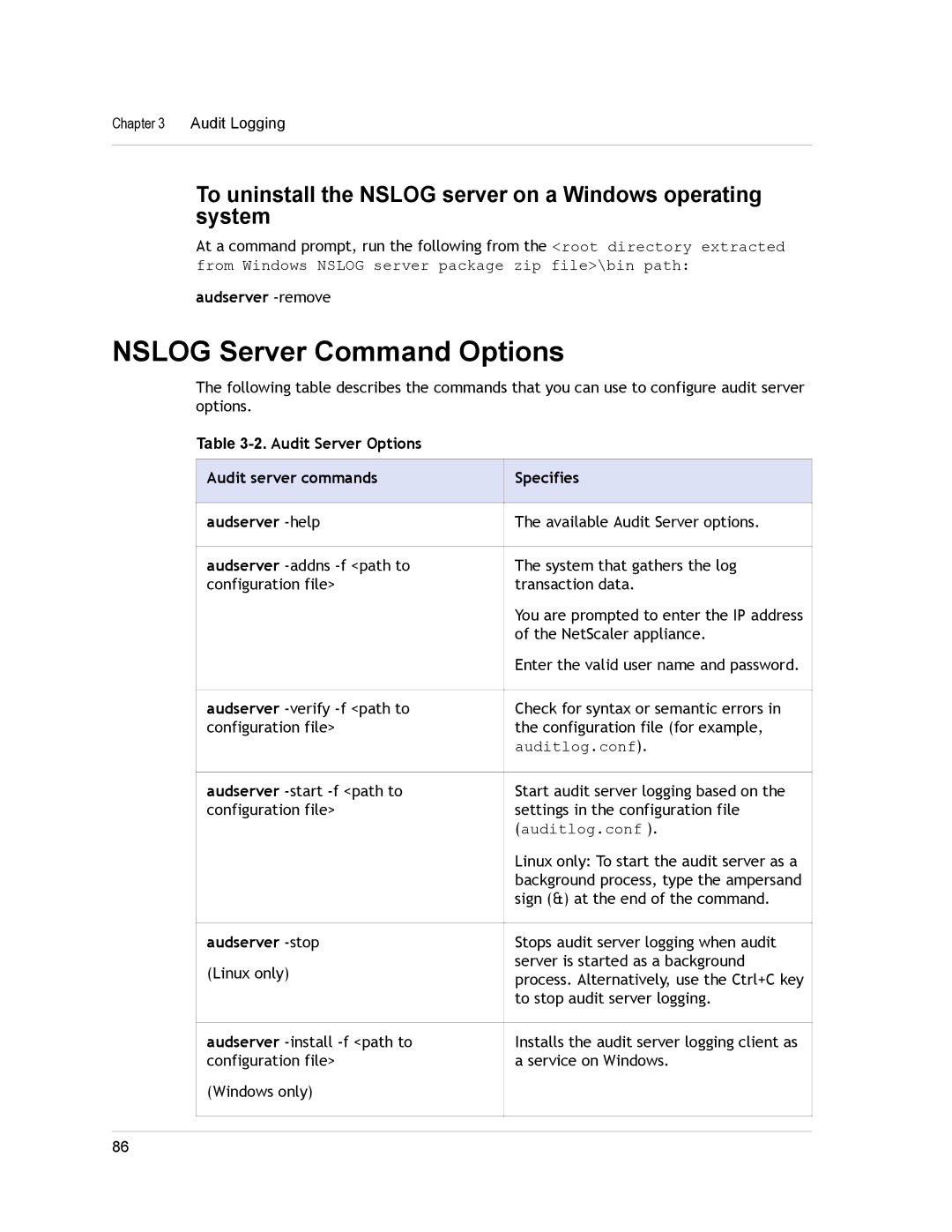Chapter 3 Audit Logging
To uninstall the NSLOG server on a Windows operating system
At a command prompt, run the following from the <root directory extracted from Windows NSLOG server package zip file>\bin path:
audserver -remove
NSLOG Server Command Options
The following table describes the commands that you can use to configure audit server options.
Table
| Audit server commands | Specifies | |
|
|
|
|
| audserver | The available Audit Server options. | |
|
|
|
|
| audserver | The system that gathers the log | |
| configuration file> | transaction data. | |
|
| You are prompted to enter the IP address | |
|
| of the NetScaler appliance. | |
|
| Enter the valid user name and password. | |
|
|
|
|
| audserver | Check for syntax or semantic errors in | |
| configuration file> | the configuration file (for example, | |
|
| auditlog.conf). | |
|
|
|
|
| audserver | Start audit server logging based on the | |
| configuration file> | settings in the configuration file | |
|
| (auditlog.conf ). | |
|
| Linux only: To start the audit server as a | |
|
| background process, type the ampersand | |
|
| sign (&) at the end of the command. | |
|
|
|
|
| audserver | Stops audit server logging when audit | |
| (Linux only) | server is started as a background | |
| process. Alternatively, use the Ctrl+C key | ||
|
| ||
|
| to stop audit server logging. | |
|
|
|
|
| audserver | Installs the audit server logging client as | |
| configuration file> | a service on Windows. | |
| (Windows only) |
|
|
|
|
|
|
|
|
|
|
|
|
|
|
86
